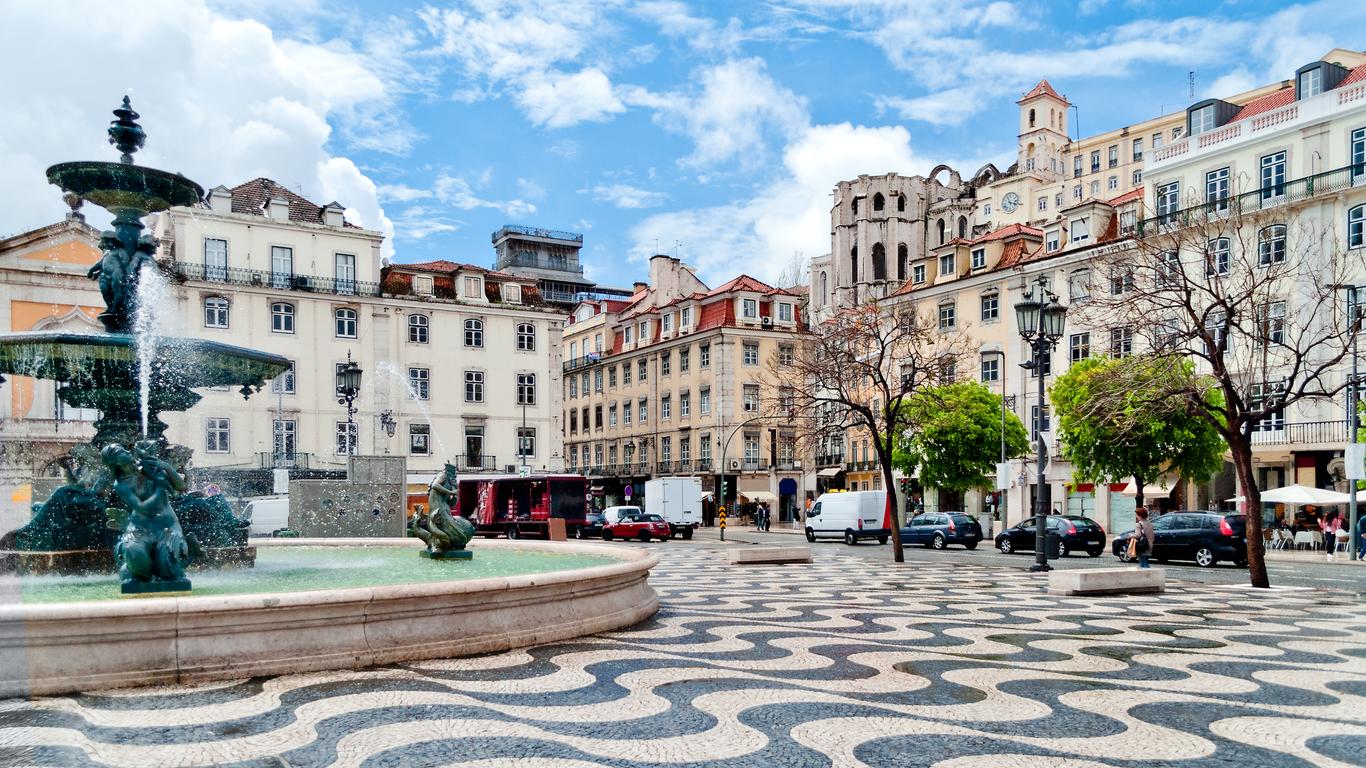Rossio Square in central Lisbon is also known as Praça de Dom Pedro IV. This bustling square is a meeting point for locals in the Pombaline downtown district of Lisbon. Rossio Square has been one of the main city squares since the Middle Ages, providing a spacious setting for celebrations, revolts and executions. Today, it is home to striking monuments, ornate fountains and a variety of shops and restaurants.
Rossio is a wonderful place in which to meet friends, enjoy a coffee and watch the world go by.Some of the cafes and shops in the square date back to the 18th century, allowing visitors to imagine life during those times. To the north, visitors can see the neo-classical building of Maria II Theatre and the public gardens. These were both frequented by high society and local gentry in centuries past. While walking around the square, discover the bronze fountains, the Column of Pedro IV and typical Portuguese mosaics. The mosaic designs can also be seen in former Portuguese colonies and cities, including Rio de Janeiro and Macao. There are two baroque fountains at either side of the square. Each consists of a pedestal with sculptures representing allegories of Justice, Strength, Moderation and Wisdom. Nearby, travellers will be able to pick up local souvenirs on the city’s main shopping street, Rua Augusta. A short walk away is Santa Justa Elevator. This landmark elevator transports visitors to the top of Lisbon city. The views from the summit are spectacular, offering vistas to the river, bridges and over the lower quarter of the city.
Getting to Rossio Square couldn’t be easier. Rossio metro station is located on the edge of the square, and there are several public bus stops. Rossio train station is a few minutes’ walk away, from here visitors can be transported to outlying areas and other Portuguese towns and cities. Taxis and Uber are also available.
Rossio was a word used to mean “commons” or “common terrain”. In the 1400s the city’s population began to expand, the Estaus Palace was constructed on the north side of the square for visiting nobility. In 1504, the construction of the city’s most important hospitals was built on the eastern side in the Manueline architectural design. Today, Rossio Square is lined with charming old world cafes, modern restaurants and architecture harking back to the Age of Discovery.





